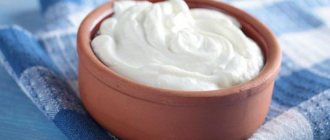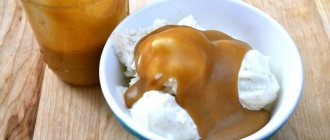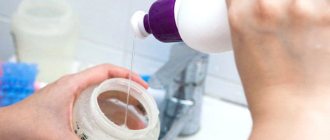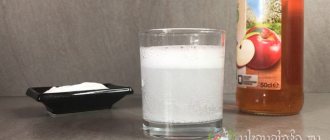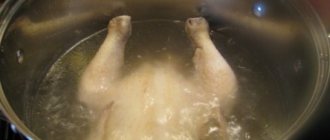Storing water in simple containers has a number of disadvantages. Among them:
- Water may spoil.
- It develops an unpleasant taste or smell.
- There is a risk of dirt or germs getting into the liquid.
But the way the store stores water is different. Manufacturers use the preservation method to preserve the quality of the liquid longer. Among the well-known methods of preservation are:
- Carbonation.
- Ozonation.
- Adding special substances (antibiotics).
The latter method of preservation is able to preserve the quality of the liquid longer than others. But there is one serious drawback - antibiotics can harm a person or reduce their resistance to diseases.
The other two methods will not harm a person, but water can only be kept until opened. Once opened, the gases and ozone disappear and the water must be used for a limited amount of time.
Which plastic bottle should you store water in?
The container in which water is stored must be made of food grade plastic. The packaging must be marked PET, such bottles are made from a substance called polyethylene terephthalate, it does not react with water and is safe for human health. Never store water in a bottle labeled PVC. The material from which it is made has toxic properties. Water should not be stored in melamine bottles.
If there is no information on the bottle, there is an easy way to check which class it belongs to. You need to press your fingernail on one of the areas of the bottle. A whitish “scar” will appear on the PVC plastic, but the PET container will remain unchanged. You can recognize a melamine container by lightly tapping it - the sound will be dull.
Shelf life of water in a plastic bottle
Canned water in a plastic bottle can be stored for six to twelve months. Once you open the bottle, the water can be stored for no more than ten days.
In addition to the expiration date, water has a “usefulness” period. This is the time after which most of the beneficial substances in the water will lose their properties. Therefore, when purchasing water in a plastic bottle, look at the bottling date - the fresher the water, the longer you can store it.
Nowadays, water is often sold in plastic bottles. You can also find people delivering liquids in similar containers. Traders use plastic containers because they allow them to store water and other liquids for a long time.
Storing water in simple containers has a number of disadvantages. Among them:
Water may spoil.
It develops an unpleasant taste or smell.
There is a risk of dirt or germs getting into the liquid.
But the way the store stores water is different. Manufacturers use the preservation method to preserve the quality of the liquid longer. Among the well-known methods of preservation are:
Adding special substances (antibiotics).
The latter method of preservation is able to preserve the quality of the liquid longer than others. But there is one serious drawback - antibiotics can harm a person or reduce their resistance to diseases.
The other two methods will not harm a person, but water can only be kept until opened. Once opened, the gases and ozone disappear and the water must be used for a limited amount of time.
Types of plastic and markings
Bottles for the food industry are made from different types of plastic. You can find out what type of plastic is used in the purchased container by looking at its bottom, where the markings are indicated. It is this marking that will help you find out for what purposes this plastic can be used, and for what it is better not to use it.
- PET (PETE) - disposable bottles made of polyethylene terephthalate. They are suitable for temporary storage of water. If you store liquid for a longer time than drink manufacturers recommend for a PET bottle, then the plastic will begin to release heavy metals and substances that disrupt human hormonal balance.
- PVC (V) is ordinary polyvinyl chloride. Bottles made from this material can be used to store vegetable oil. At the same time, experts recommend avoiding contact of such a bottle with direct sunlight, because under certain conditions it can also release harmful substances.
- HDP (HDPE) is a material that is completely safe for human health. This is why most plastic bottles are made from it. Mineral water and household chemicals can be stored equally well in such bottles.
- LDPE is low density polyethylene. It is also considered safe for health, so water and food can be stored in products made from this material. In addition, bottles made of this polyethylene can store water for a long time, because no harmful substances are released during use and constant contact with the liquid.
- PS is a polystyrene material. It is very light and strong, so polystyrene bottles are less likely to bend or warp. You can store any food products and water in them, because the material does not emit harmful substances. Suitable for cold liquids only.
- PP - polypropylene. This is the safest type of plastic bottle and is even used to make baby bottles. You can store absolutely everything from it in bottles. That is why most beer manufacturers choose this material to produce bottles for their product. Requirements for storing alcohol in disposable containers mean that plastic beer bottles must have a composition that does not release any harmful substances into the drink. In addition, beer should not change its chemical composition at all from contact with the container.
- PC is polycarbonate. This type of plastic is the most harmful and is rarely suitable for storing drinks and ordinary water. It releases harmful substances that negatively affect the hormonal balance of the body. To neutralize the negative impact, manufacturers specifically indicate a short shelf life during which the product must be consumed. Under no circumstances should you drink water from such a bottle after its expiration date.
Top articles: Liver in milk in the refrigerator overnight?)))
What conditions are needed for proper storage in plastic containers?
When buying water, you need to find a place for it in the kitchen or other room. There are a number of conditions that will help preserve the liquid longer:
Keep at a temperature not lower than 15 and not higher than 30 degrees.
Place the plastic in a dark place. Protect from sun exposure.
Buy water that has been recently produced.
It is better to purchase a liquid that is made locally where you live. This will preserve the maximum of nutrients.
Pay attention to what plastic the bottle is made of.
What plastic containers are suitable?
When creating a container, materials intended for storing food products should be used. The PET symbol is placed on the label. This means that the container is based on a material (polyethylene terephthalate) that does not harm human health and does not release foreign substances upon contact with water. If the bottle is marked PVC, storing liquid in it is prohibited. The material from which they are prepared has toxic properties. It is also prohibited to store water in a bottle that contains melamine.
There are times when there are no markings on the label and it does not say what material was used, there is a way to check this. Press down on the bottle with your fingernail. A mark will remain on the container made of PVC material, but the container containing PET will not be damaged. A container containing melamine can be identified by its sound. You need to knock on it. If the sound is dull, then the container cannot contain liquid.
Innovation against plastic
In fact, there is even plastic in tea bags. As of 2022, 95% of them
have a seal at the very top where the plastic is contained.
The simplest and most obvious way to eliminate plastic problems in the future is to stop using it. But although there is active discussion about banning single-use plastic products across Europe, it cannot be expected that all countries will pass relevant laws at once. And even if so, there will still be countries outside the EU where something also needs to be done. Scientists around the world are still trying to come up with simpler ways to recycle plastic. People produce and use a million bottles per minute, of which less than half are recycled. But on a small island near Panama they are solving this problem by using bottles to build houses. Canadian Robert Bezu, who came up with the idea of turning plastic into buildings, admits that the idea came to him after he was tired of collecting bottles on the beaches of the island. The village, by the way, is now called Plastic Bottle Village.
Another innovation is the processing of plastic into oil. About 8% of global oil production is used to produce plastics, a figure predicted to rise to 20% by 2050. Perhaps the best way to recycle plastic is to turn it back into oil so it can be reused. And Japanese scientists have already made a device that is capable of this. The process is surprisingly efficient—it can produce a liter of oil from a kilogram of plastic for just 20 cents.
ReDeTec has developed the first and so far only system that can recycle plastic waste into new filament and then use it for 3D printing.
At the same time, the ProtoCycler printer can load a variety of plastics - from defective 3D models to empty bottles.
Biodegradable packaging options are also emerging.
The drinking water bottle, created by Icelandic designer Ari Jonsson, contains red algae powder and water.
Huge potential has also been found in fungal mycelium. Experiments are ongoing, but it is already clear that such packaging will have natural fire resistance and plasticity. PHOTOS: estradaanton – stock.adobe.com
How to store water?
Water is an important component of the human body and can do many beneficial things. The study conducted an experiment that confirmed that the properties of a liquid depend on the conditions of its storage.
Interesting experiment
Scientists made an experiment by studying how the properties of a liquid change during storage. Plain water was poured into various containers, kept for 48 hours, and the changes that occurred during storage were studied. The most common utensils used in the experiment were:
Glass decanter.
Aluminum pan.
Glassware with silver spoon in water.
Transparent plastic bottle.
Colored plastic bottle.
The results showed that water was preserved best in glass containers, and worst in plastic containers. The quality of water is also affected by the presence of light.
Distilled
Distilled water is obtained by distillation in special devices called distillers.
The liquid is cleared of mineral salts and trace elements, after which it acquires properties similar to those of melt water from mountain peaks.
Distilled water is an excellent solvent.
It differs from ordinary water in that it has a higher boiling point and a lower freezing point.
Areas of application of distilled water:
- car parts care;
- antifreeze dilution;
- in windshield washers;
- steam equipment, irons, air humidifiers;
- cleaning of measuring instruments;
- for laboratory research;
- in pharmacology.
In theory, distilled water can be drunk.
But still, it is not suitable for daily drinking.
After all, it lacks mineral salts and microelements - essential components of a complete human diet.
It has been noticed that the less of them is contained in water, the higher the risk of developing dangerous diseases of the heart, blood vessels, and caries.
The production of distilled water is regulated by GOST 6709–72.
After this period, the water becomes acidic, which can cause distortion of test results, affect the quality of medicines, etc.
For use for other purposes, the shelf life is unlimited.
Water is stored in closed polyethylene bottles, as well as in ceramic, glass or enamel vessels.
But when stored in a tightly closed container, the substance may acquire a musty odor over time.
To avoid this, calcium chloride tubes filled with lime are inserted into the lid and covered with cotton wool.
How to store water
Although water appears to be completely transparent, containing no impurities, it contains a large number of useful substances and properties, without which no organism can live. We are accustomed to the fact that water is always at hand, it flows from the tap, it is in the refrigerator - plain and with gas. But in our alarming times, when man-made disasters of large and small scale are becoming not the fiction of science fiction writers, but a reality, it is worth thinking about how you can create at least a small supply of clean water in your home?
How to properly store water
In order for the water to remain useful for as long as possible and not spoil, you need to know how to properly store water for a long time. It is advisable to store boiled water in an enamel container with a lid. If there is a filter system, then the filtered water should be poured into a glass container. This water should be used within 2 days, no more. Water for storage must be free of visible impurities, and preferably without chlorine. But since our water at pumping stations is purified with chlorine, tap water needs to be poured into a container, preferably enameled or PET, and left overnight without sealing it. During this time, the chlorine will disappear and the water can be covered and stored. If the water is from a pump room or a well, then the question immediately arises: what is the best way to store such water? The choice of containers for storing water is large, and each has its own pros and cons. It is best to store water in a glass container; water can be stored in it for a long time, almost up to 3 years, provided that it is hermetically sealed. But not only glass retains water well and for a long time. These can be ceramic or clay containers, metal barrels or canisters, coated inside with enamel or other neutral coating that does not release harmful substances when exposed to water.
What to choose
How to properly store water? In what room and container? Here is a list of the most popular options:
Glass. The best option. Glass has no effect on water at all. Does not react, does not impart odor or taste. Glass itself is an environmentally friendly material, and therefore it is best to store water in it, especially for children. In this case, the shape, color and size do not matter at all. The disadvantages are the weight and fragility of the containers. The bottles are quite heavy, and therefore lifting them “with one left hand” is hardly possible. Place glass containers away from children in those cabinets that the child either cannot crawl into or cannot reach. "Stainless steel" and aluminum. Our compatriots still have the habit of storing water in metal cans. What can you do, because in Soviet times it was impossible to find plastic bottles during the day and with fire. However, we must give such “ware” its due - it is better than plastic. Much stronger than glass, it cannot be broken, but it can easily be bent. So be careful. Some people note that water, after standing in stainless or aluminum cans, acquired a metallic taste. Plastic. This type of “ware” is the cheapest and most popular. Only the water in it has the shortest shelf life. You need to select plastic bottles with extreme care. There is a very high risk of buying a product made from low-quality toxic material.
Trust your sense of smell - if the container gives off a persistent chemical “aroma”, pay attention to other options.
After purchase, any container must be thoroughly washed. Don’t forget to add detergent there (the option for dishes is perfect), pour warm water and let it sit for several days. Then rinse the container thoroughly and can be used for its intended purpose.
What about clay jugs and enamel dishes? These options are also great.
Is it possible to store water in plastic bottles?
Manufacturers produce water in plastic containers of the appropriate food grade. This is polyethylene terephthalate, PET, which is safe for health and completely neutral. The plastic marking must be embossed on the bottle. In some cases, water is bottled in PVC plastic. This plastic is toxic and best avoided. There are plastic containers made of melamine on sale; water cannot be stored in them.
Water in plastic bottles should be stored in a dark place at a temperature of 20-30 degrees.
How long you can store water in a plastic bottle depends on the quality of the water itself and the manufacturer who preserves the water at the bottling stage. Average shelf life ranges from 6-12 months, but if the bottle is opened, it can last no more than 5-7 days.
It would be correct if, when purchasing water in plastic bottles, they pay attention to the bottling date, because the “fresh” the water, the longer it can be stored.
See also:
Don't know how to properly store milk? We will help! This article describes all possible ways to store milk.
Are you sure that you store your cognac in the bar correctly? Read our article on storing cognac
Storing vodka is a process that does not need special control. But there are some secrets to properly storing this drink.
Part 2. Local problem, or Is drinking from plastic harmful?
The more garbage there is on the planet, the more harmful the environment in which we live, the air we breathe and the water we drink. Let's call it a systemic problem. But much more often people are concerned about the local issue of their own health, rather than the environmental situation in the Pacific Ocean.
Technology In the USA, street lights call the police if there is a shooting in the city
So, you buy water in a plastic bottle. What's happening? What harmful substances enter your body? Do they pose a risk of poisoning? Do they cause cancer? To be honest, there is practically nothing to worry about here, otherwise plastic containers would have been banned long ago. There are a number of assumptions and hypotheses claiming that contact of various types of plastic with water leads to the release of carcinogenic compounds into the liquid, but there is no direct evidence of this.
The US Food and Drug Administration (FDA) is closely involved in research in this area. Up until 2010, virtually all FDA reports concluded that they lacked statistical material. But in January 2010, the FDA suddenly released a large amount of material about the potential harm of plastic containers for water and food, and, moreover, described very specific diseases and their causes. In particular, bisphenol A (C15H16O2), one of the main components of plastic and a participant in the “plastic revolution” of the 1960s, was recognized as a dangerous substance. It has been proven that when food is heated or stored for a long time in containers containing bisphenol A, it actually passes into the food and can lead to serious poisoning, in particular, damage to hormonal function and a decrease in the amount of sex and thyroid hormones produced by the thyroid gland. Therefore, in a number of countries around the world, after the publication of the report, the use of plastics containing bisphenol A in baby food containers and feeding bottles was banned. Various articles emphasize that Canada was the first to do this, even before the publication of the report, but this is not entirely true, because back in 1997, bisphenol was abandoned in Japan - based on the results of its own local studies.
On many plastic products, even those not intended for direct contact with food, you can often find the BPA FREE marking, that is
There are a number of other studies on this topic. All the results boil down to one conclusion: it is possible to store water and food in plastic. But not for too long (different times vary for different plastics). But you shouldn’t heat it up at all, especially above 60 °C.
It is worth noting here that polyethylene terephthalate, from which the lion’s share of all bottles are made, is still considered safe for health; it does not contain bisphenol A or other potentially harmful substances. But let us remember: the FDA has been thinking about bisphenol for more than 10 years. And then I thought of it. So rely on the doctors, but don’t make a mistake yourself. In addition, we note separately that the same bisphenol is often found in packages where it should not be by default, since it is removed at the production stage. But, apparently, not completely.
Controversial, but still direct harm from the use of plastics is complemented by global harm caused to the environment - we mentioned this above. We drank from a disposable plastic bottle and threw it away. It seems like they didn’t harm themselves, but the world around them, yes. And this accumulated harm leads to the poisoning of the earth and animals, and through them it ricochets back to us.
So where does all this garbage go if it doesn't end up in recycling plants?
What is the shelf life of drinking water in a closed plastic bottle?
The expiration date of drinking water is usually indicated at the bottom of the bottle, on the label, or next to the neck of the bottle. It depends on what kind of water it is. Judging by sweet drinks, then everything depends on where it is located. It is impossible for sweet water to be exposed to direct sunlight, since all the chemistry that is in this drink begins to interact, and even after taking such a mixture, deterioration in well-being is possible, even to the point of poisoning. And any water is best stored away from sunlight, in a room with a neutral temperature, so that the water can stand longer; it is advisable, of course, to place the water in the refrigerator.
The expiration date of the water is indicated on the bottle itself. Usually it is 6 months. But in fact, water has no expiration date. The date is indicated for other reasons. Firstly, water, like any other product, must obey the laws of food production. And secondly, the water itself does not spoil, but after a certain period of time, substances begin to be released from the plastic that change the taste of the water.
The expiration date of drinking water is usually indicated at the bottom of the bottle, on the label, or next to the neck of the bottle. It depends on what kind of water it is. Judging by sweet drinks, then everything depends on where it is located. It is impossible for sweet water to be exposed to direct sunlight, since all the chemistry that is in this drink begins to interact, and even after taking such a mixture, deterioration in well-being is possible, even to the point of poisoning. And any water is best stored away from sunlight, in a room with a neutral temperature, so that the water can stand longer; it is advisable, of course, to place the water in the refrigerator.
— Are all bottled waters suitable for daily drinking?
— Fresh drinking water with a salt content of less than 1 gram per liter is suitable for daily consumption.
Waters with a total salt content of 1 to 15 grams per liter should have restrictions on the volume and duration of continuous consumption. And medicinal mineral waters with a salt content of more than 15 grams per liter should be used only as prescribed by a doctor.
Previously, we went “to mineral waters” for 24 days, and then for six months we did not drink these waters or drank them in limited quantities. Because even if you drink such well-known mineral waters as “Essentuki” and “Borjomi” constantly, day after day, like drinking water, you can disrupt many functional systems of the body.
— How much do you need to purify the water? At one time there was talk about how you should drink distilled water, purified from literally everything.
— Distilled water, when used for a long time, is just as unsafe for the body as unpurified water. Our body maintains a certain salt homeostasis, salt balance.
If you get completely desalted water, you seem to dilute the concentration of salts that you have inside your body. As a result, the body takes certain protective measures, which, with prolonged use of desalted water, can have a negative impact on health.
Top articles: Shelf life of chilled meat in the refrigerator
Shelf Life of Drinking Water in a Plastic Bottle
But what is the truth? Perhaps this is a question that cannot be answered in monosyllables by saying a firm “yes” or “no.” After all, a lot here depends on the plastic itself and how it is used.
The safest plastic storage containers are the so-called PET bottles, made from polyethylene terephthalate. But PVC bottles are really unsafe and can very easily contain harmful toxins.
Of course, many conscientious manufacturers indicate what the bottle is actually made of. But we should not forget that, as a rule, many people like to “boast” about good material, but no one wants to tell the world that their bottle is made of a by no means harmless, although acceptable, material. Therefore, you should not ignore the expression: “Trust, but verify!”
And to carry out such a check, by the way, is not at all difficult. Just press lightly on the bottle with your fingernail. A PVC bottle will definitely “signal” about danger with a characteristic whitish scar, and a PET bottle will show its persistent and harmless “character”.
However, you should also be aware that any “right” container with the right water can become “wrong” if it is not stored properly. After all, if PET bottles are stored in the sun at a temperature of more than 30 ° C, compounds that are not at all harmless will begin to “migrate” into the water.
But what you really shouldn’t store water in (especially that which will then be used for food or to relieve thirst) under any circumstances is in containers containing melamine, one of the main “suppliers” of formaldehyde. “Recognizing” the character of melamine tableware is also not very difficult. Visually, it is a white classic plastic, which, when tapped, “gives” the ear a very dull sound. And, worst of all, harmful substances will be “pulled out” from such dishes not only by the summer temperature, but also by any mechanical damage.
Sometimes people ask the question: “Does water have an expiration date?” Some people think not and wonder why water bottles are marked with dates.
Which plastic bottle should you store water in?
The container in which water is stored must be made of food grade plastic. The packaging must be marked PET, such bottles are made from a substance called polyethylene terephthalate, it does not react with water and is safe for human health. Never store water in a bottle labeled PVC. The material from which it is made has toxic properties. Water should not be stored in melamine bottles.
If there is no information on the bottle, there is an easy way to check which class it belongs to. You need to press your fingernail on one of the areas of the bottle. A whitish “scar” will appear on the PVC plastic, but the PET container will remain unchanged. You can recognize a melamine container by lightly tapping it - the sound will be dull.
What kind of water do you need
There is a common myth that almost any water sold in bottles is mineral. Of course this is not true. All bottled water can be divided into three main categories: drinking, mineral and artificially mineralized.
Drinking water is ordinary water from the city water supply, which has been purified and bottled with beautiful labels. It doesn't have enough salts to be considered a mineral. At the same time, drinking water is safe for health; it can be used both to quench thirst and for cooking, brewing tea, coffee and other drinks.
Natural mineral water is obtained from artesian wells - holes in the soil of natural or artificial origin. Their depth ranges from 30 to 250 meters, depending on the level at which the underground springs lie. Artesian water may contain calcium, magnesium, sodium, potassium and other biologically active substances. Drinking mineral waters in treatment and rehabilitation, which are beneficial for health. It is used for the prevention and treatment of various diseases.
Artificially mineralized water is ordinary drinking water that has been enriched with minerals and bottled. The problem is that it is almost impossible to artificially achieve the same ratio of salts and biologically active substances as in natural mineral water. Therefore, mineralized water does not have a preventive or therapeutic effect.
Any bottled water - drinking, mineral or artificially mineralized - can be carbonated or still.
Shelf life of water in a plastic bottle
Canned water in a plastic bottle can be stored for six to twelve months. Once you open the bottle, the water can be stored for no more than ten days.
In addition to the expiration date, water has a “usefulness” period. This is the time after which most of the beneficial substances in the water will lose their properties. Therefore, when purchasing water in a plastic bottle, look at the bottling date - the fresher the water, the longer you can store it.
Under normal conditions, water begins to change under the influence of light and heat, and after some time, bacteria that enter the water give it an unpleasant odor and taste. But how is water stored in supermarkets? The fact is that manufacturers preserve all the water in plastic bottles.
Video
We offer you to watch a video from YouTube on the topic of the article:
In spring, the water in the spring is dangerous - Igor Nikolaevich, can water from the spring be collected in cans or plastic bottles? — It is best to collect spring water in glass containers. Plastic containers are not the best option, since when exposed to sunlight, plastic can release a dangerous substance - vinyl chloride. It is also necessary to monitor the labeling of plastic containers. For example, markings in the form of “PVC” or a triangle with the number 3 indicate that the bottle is made of harmful polyvinyl chloride and water cannot be stored in it. You can collect water in a plastic container from bottled water, but do not store it in the light.
It is not advisable to store spring water in aluminum containers. Aluminum gradually passes into water and adversely affects the kidneys. In addition, aluminum negatively affects the function of the parathyroid glands. Long-term consumption of water with high aluminum content is one of the main causes of Alzheimer's disease in the elderly.
